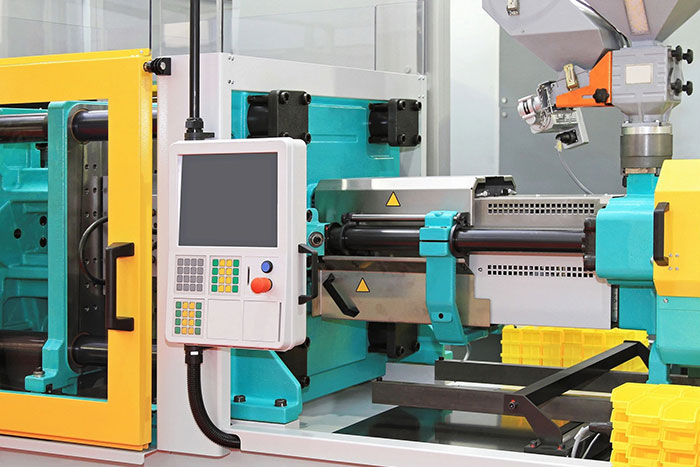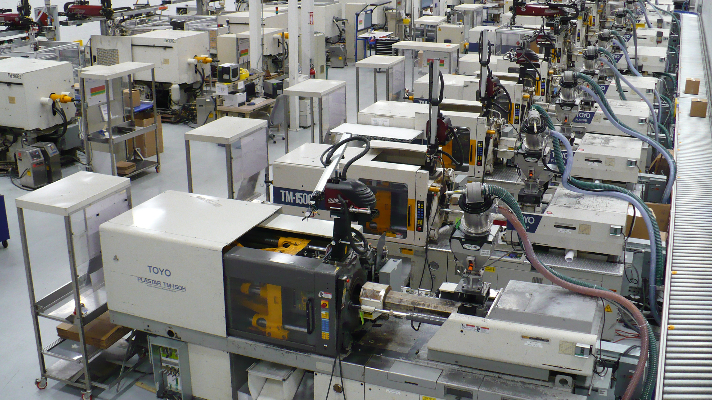Plastic Injection Molding: A Comprehensive Overview to Modern Production Techniques
Plastic Injection Molding: A Comprehensive Overview to Modern Production Techniques
Blog Article
The Future of Plastic Shot Molding: Patterns and Technologies to Enjoy
As the plastic shot molding industry progresses, several key trends are emerging that guarantee to improve its landscape. Automation and clever production techniques are set to enhance performance, while the shift towards lasting products mirrors a growing ecological consciousness. Moreover, advancements in 3D printing are paving the method for unprecedented layout flexibility. These developments additionally bring forth obstacles that call for careful consideration. Comprehending exactly how these elements will certainly engage and affect future practices is crucial for stakeholders wanting to navigate this transformative duration efficiently.
Automation and Smart Manufacturing
As the plastic shot molding market develops, automation and clever production are taking spotlight, revolutionizing manufacturing procedures - Plastic Injection Molding. The integration of innovative innovations such as robotics, IoT (Web of Things), and expert system is making it possible for suppliers to enhance performance, decrease functional costs, and boost product quality. Automated systems streamline process, lessening manual intervention and enhancing throughput, which is vital in satisfying the rising demand for rapid manufacturing cycles
Smart manufacturing technologies facilitate real-time surveillance and data analysis, allowing companies to enhance machine efficiency and anticipate maintenance demands. This aggressive technique not only reduces downtime but likewise extends the life-span of tools. The use of joint robotics, or cobots, enhances the flexibility of production lines, making it possible for equipments and workers to run side by side safely and successfully.
The adoption of automation in plastic injection molding is not merely a pattern but a tactical necessary for companies aiming to continue to be competitive in a global market. By using these technologies, suppliers can accomplish higher precision, decrease waste, and adjust promptly to altering client needs, positioning themselves for sustainable growth in a significantly automated future.
Sustainable Products and Practices
The push towards automation and wise manufacturing has paved the means for a higher emphasis on lasting products and methods within the plastic shot molding industry. Companies are significantly looking for environmentally friendly alternatives to typical petroleum-based plastics, resulting in the adoption of bio-based and recycled products. These sustainable products not just minimize environmental influence however also straighten with customer demand for greener items.

Moreover, collaboration in between producers, material vendors, and environmental organizations is cultivating innovation in the growth of sustainable materials that satisfy performance requirements without compromising top quality. As laws around plastic usage become more stringent, the market is positioned to adjust by welcoming these sustainable strategies, guaranteeing long-term stability and reducing dependence on non-renewable sources. The assimilation of sustainability into plastic injection molding is not merely a fad; it is ending up being a necessary element of corporate obligation and functional quality.
Breakthroughs in 3D Printing
Current advancements in 3D printing technology are dramatically changing the landscape of plastic injection molding. The assimilation of additive manufacturing processes allows for the quick prototyping of complex geometries that were impossible or as soon as challenging to accomplish through conventional techniques - Plastic Injection Molding. This capability not only accelerates item development cycles but likewise decreases product waste, straightening with the growing demand for sustainable production methods
Moreover, the introduction of crossbreed production techniques, which incorporate 3D printing and injection molding, offers makers the capability to create intricate styles while maintaining the effectiveness of mass manufacturing. This method makes it possible for the production of tailored parts customized to particular client demands without sacrificing the speed and scalability that shot molding gives.
Additionally, advancements in products, such as high-performance polymers and compounds specifically made for 3D printing, are improving the functional capacities of printed components. These materials can hold up against greater tension and exhibit boosted thermal buildings, making them ideal for even more demanding applications.
As 3D printing remains to progress, its assimilation into plastic injection molding processes guarantees to improve efficiency, reduce expenses, and foster innovation in product layout, positioning manufacturers to much better fulfill the difficulties of an affordable market.
Data Analytics and IoT Combination
Information analytics and the assimilation of the Internet of Points (IoT) are reinventing plastic shot molding by offering makers with unmatched understandings into their operations. By leveraging real-time information collected from interconnected devices and sensing units, suppliers can keep an eye on efficiency metrics, identify inefficiencies, and optimize production processes. This data-driven technique facilitates anticipating maintenance, lowering downtime and prolonging devices lifespan.
Moreover, IoT assimilation enables enhanced quality control. By constantly tracking variables such as temperature, cycle, and stress times, suppliers can promptly spot variances from developed specifications and make modifications in real time. This not only enhances item consistency however additionally lowers waste and scrap rates.
The blend of information analytics and IoT innovations likewise encourages suppliers to adopt more nimble production methods. With access to extensive information analytics, organizations can react to market needs with higher versatility, adjusting manufacturing schedules and configurations as needed. This adaptability is crucial in a rapidly changing production landscape.

Customization and Layout Adaptability
Just how their explanation can personalization and design versatility improve the competition of plastic injection molding? In an increasingly varied market, the ability to use customized solutions is critical. Modification allows producers to satisfy details client requirements, accommodating one-of-a-kind measurements, forms, and capabilities that typical items may not fulfill. This adaptability not just promotes client loyalty however likewise opens methods for new organization possibilities across different sectors, from automotive to durable goods.
Innovations in layout modern technologies, such as computer-aided style (CAD) and quick prototyping, more boost this trend. These devices allow developers to create intricate patterns and complicated geometries, which can be perfectly incorporated into the manufacturing process. As an outcome, suppliers can respond quickly to changing consumer choices and market needs.
Moreover, the application of modular tooling systems improves style versatility, enabling quicker adjustments in between various item styles without considerable downtime. This versatility can bring about reduced lead times and lower production prices, making firms more agile and affordable. Ultimately, embracing customization and layout flexibility in plastic injection molding not just elevates item offerings but also enhances check my reference market positioning in an ever-evolving landscape.
Final Thought
The future of plastic shot molding is defined by significant advancements in automation, sustainable practices, and cutting-edge materials. Customization via modular tooling and fast prototyping will make it possible for manufacturers to remain responsive and competitive to the dynamic demands of the market.

The future of plastic injection molding is characterized by substantial improvements in automation, sustainable practices, and ingenious products.
Report this page